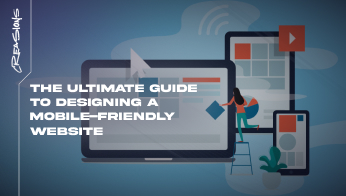
Website design is both an art and a science, combining aesthetic appeal with functionality to create engaging user experiences. This blog delves into the key principles of website design, the importance of user-centric design, and how businesses can leverage effective design to achieve their goals.
1. Introduction to Website Design
Website design involves planning, conceptualizing, and arranging content intended for the internet. It goes beyond aesthetics to include the overall functionality and user experience of the website.
2. The Role of Aesthetics
Aesthetics play a crucial role in creating a positive first impression. Elements such as color schemes, typography, imagery, and layout contribute to the visual appeal of a website. A well-designed website reflects the brand’s identity and values, making it more memorable to visitors.
3. User-Centric Design
User-centric design focuses on the needs and preferences of the target audience. This approach involves understanding user behavior, conducting usability testing, and making design decisions that prioritize the user experience. Features like intuitive navigation, clear call-to-actions, and responsive design are essential.
4. Mobile Responsiveness
With the increasing use of mobile devices, ensuring that a website is mobile-friendly is imperative. Responsive design allows a website to adapt to different screen sizes and devices, providing a seamless experience for users regardless of how they access the site.
5. Navigation and Usability
Effective website design prioritizes easy navigation and usability. A clear and logical structure helps users find information quickly and effortlessly. Incorporating elements like search bars, breadcrumbs, and well-organized menus enhances usability.
6. Visual Hierarchy
Visual hierarchy is the arrangement of elements in a way that guides users’ attention and helps them process information more efficiently. Techniques such as size, color, contrast, and spacing are used to create a visual hierarchy that directs users to important content and calls-to-action.
7. Accessibility
Accessibility is an essential aspect of website design, ensuring that all users, including those with disabilities, can access and navigate the site. This includes using proper HTML tags, providing alt text for images, and ensuring that the site is compatible with screen readers.
8. The Impact of Design on SEO
Website design also impacts search engine optimization (SEO). Elements like site structure, mobile-friendliness, page load speed, and proper use of headings and meta tags contribute to a website’s SEO performance. A well-designed website can improve search engine rankings and drive more organic traffic.
Conclusion
In conclusion, website design is a critical component of creating engaging user experiences. By combining aesthetic appeal with functionality, businesses can attract and retain visitors, improve usability, and achieve their goals. Investing in user-centric design principles, mobile responsiveness, navigation, visual hierarchy, accessibility, and SEO can lead to a successful and impactful online presence.









